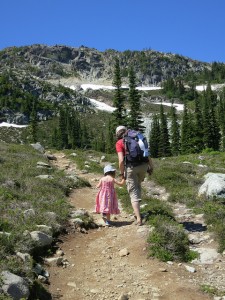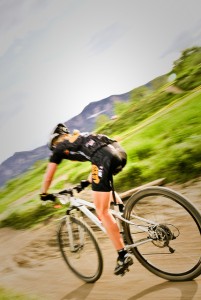 Got the skins ready to go on the skis. Boots, poles, extra clothes, food, the 10 essentials, ibuprofen, food, headlamp, snacks, back issues of The New Yorker, backpack, and my old sleeping bag. That’s the problem. It’s warm but bulky. How will I ever get it and everything else I absolutely need into the pack? I feel my heart racing. I’m going out to spend three winter nights in a 10th Mt. Division hut at 10,360’ with seven people I don’t know. How will I carry everything I need.
Got the skins ready to go on the skis. Boots, poles, extra clothes, food, the 10 essentials, ibuprofen, food, headlamp, snacks, back issues of The New Yorker, backpack, and my old sleeping bag. That’s the problem. It’s warm but bulky. How will I ever get it and everything else I absolutely need into the pack? I feel my heart racing. I’m going out to spend three winter nights in a 10th Mt. Division hut at 10,360’ with seven people I don’t know. How will I carry everything I need.
Another trip to REI. Dave, there, knows me by now. There is the perfect sleeping bag, light as its feathers, good to 35°. I’ve heard that the woodstove keeps the hut warm all night. But any sleeping bag takes up space. I explain the conundrum, and Dave does not roll his eyes. He leads me over to the compression sacks. There’s even a waterproof one so I can strap the bag outside on top. Perfect. Does it come in red? Dave rolls his eyes.
I go home and practice. With the help of a 5-year-old can-do-all-lego-kits consultant who untangles the straps and hooks it up right, wow, it sure works.
Under the wondrous Colorado blue sky, skinning up and down with a group of experienced (more than me) mountain hut-trippers, 16” of new snow on a deep base, slip-sliding along in the high altitude, I wonder. What was the big deal about “compression”? Why was I worried anyway? Everything’s in. Compressing my new sleeping bag so it didn’t take up too much space? Not exactly a piece of cake, but close. I think about how good it’ll feel to climb in later when we’re all there, the woodstove’s cranking, and the loft is warm.
I notice clouds roaring in over the Continental Divide. I’m chilly. Feel anxiety grinding in my guts. Where’s the hut? It’s taking us a long time to get to there. Carol pulls out her topo’ map. Greg huddles with her. OK, we stay left, close to the trees. Two miles to go. I can do that. Gorp, water, a little piece of chocolate, tighten my boots. But what if the wood’s wet when we get there? What if we don’t know the combination lock code to get in? I don’t.
Now the group is anxious and everyone moves faster. It’s snowing for real. I’m in the back, behind. Narrow kicker skins don’t traction as well on uneven terrain. My heart rate is doing zone 4 intervals. Mountain lion tracks. Increasing snow and gusts, must be 50 mph. No fooling around. This is more like Philip Glass music, not John Williams.
We huddle. “Have you seen a blaze?” “Do you see one? I don’t.” “Should we head down to the creek? We could follow it up the draw. The hut’s at the top.” “Have to take care we don’t ‘cliff out’.” “Check the map.”
Wind-layer pants aren’t extra now. I dig out my hat with the earflaps. I do a mental check: bivvy bag, fire starter, down layer, shovel, bars and gorp, compass. Remind myself: I have family. I have friends at home. We head north-westerly. We must be close. Oh, please! A snowshoe hare darts into a tree well. Getting dark. My car’s back at the trailhead. Full tank of gas. OK. Snow tires. OK. Keys in left, zippered hipbelt pocket. Full thermos of tea. Check my cellphone. No bars. OK. OK. ok…ok.
I remember my ski coach, Siga: “You’ve got the spring! Long moments of good weight shift. Getting this down is a journey of finesse, and it can take you a lifetime. Put THAT down your shirt.” I’m trying. We take turns breaking trail in the heavy snow. We see the hut. I’m drenched in sweat. We’ve all got jobs. Besides shoveling off the porch and carrying 24 buckets of snow in to melt, I’m going to shake out that sleeping bag. All this compressed into five hours.
 Do you wake up at 3:00 a.m., your mind racing with what what you have to do today, getting up to check email, heart rate up, hands shaky, chilly and upset that you’re up? How about during the day? Does your whole body scream “ALERT!!” as you’re driving, checking texts at stoplights, grabbing a coffee for lunch, forgetting little-big things, feeling overwhelmed and hopeless, barely keeping up, hoping no one will notice, bags sliding off your shoulders as you run to what’s next, what’s next, and what’s next? This is making you sick. Stress is good as a motivator, a message, but this much is nuts! Sit down, take some deep, really deep breaths, and get out your calendar. We all must schedule “me” time. We must be on our lists. This article is meant to encourage you to take care of yourself.
Do you wake up at 3:00 a.m., your mind racing with what what you have to do today, getting up to check email, heart rate up, hands shaky, chilly and upset that you’re up? How about during the day? Does your whole body scream “ALERT!!” as you’re driving, checking texts at stoplights, grabbing a coffee for lunch, forgetting little-big things, feeling overwhelmed and hopeless, barely keeping up, hoping no one will notice, bags sliding off your shoulders as you run to what’s next, what’s next, and what’s next? This is making you sick. Stress is good as a motivator, a message, but this much is nuts! Sit down, take some deep, really deep breaths, and get out your calendar. We all must schedule “me” time. We must be on our lists. This article is meant to encourage you to take care of yourself.



